- Back to Home »
- How to survive a plane crash
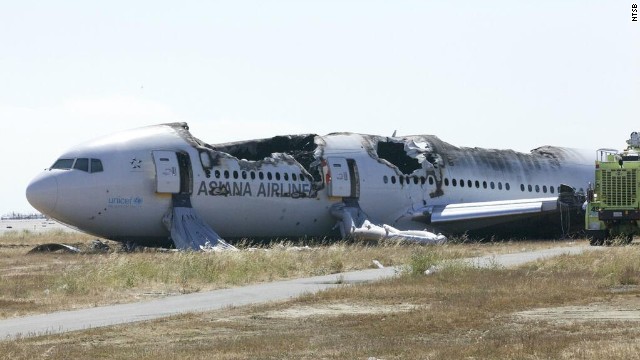 Asiana Airlines Flight 214 sits just off the runway at San Francisco International Airport on Sunday, July 7, in a handout photo from the National Transportation Safety Board. The Boeing 777 coming from Seoul, South Korea, crashed on landing on Saturday, July 6.
Asiana Airlines Flight 214 sits just off the runway at San Francisco International Airport on Sunday, July 7, in a handout photo from the National Transportation Safety Board. The Boeing 777 coming from Seoul, South Korea, crashed on landing on Saturday, July 6. 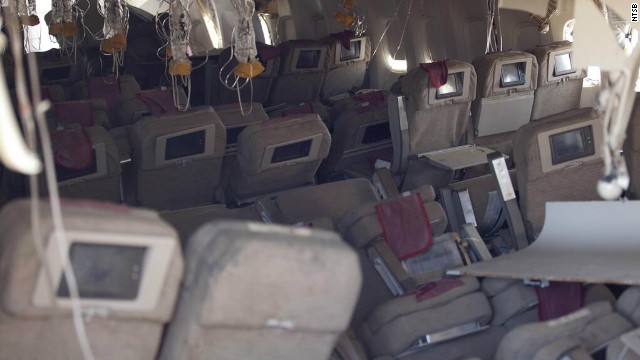 On July 7, the NTSB released this photo showing the inside of the aircraft.
On July 7, the NTSB released this photo showing the inside of the aircraft. 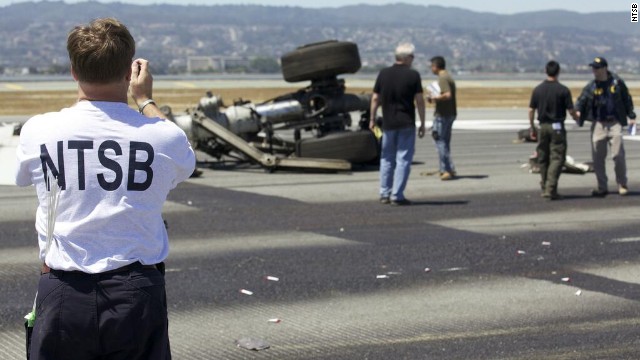 An investigator photographs part of the landing gear at the crash site in a handout released on July 7. The NTSB's preliminary assessment of the plane's cockpit and flight data recorders shows the flight was coming in too slow and too low.
An investigator photographs part of the landing gear at the crash site in a handout released on July 7. The NTSB's preliminary assessment of the plane's cockpit and flight data recorders shows the flight was coming in too slow and too low. 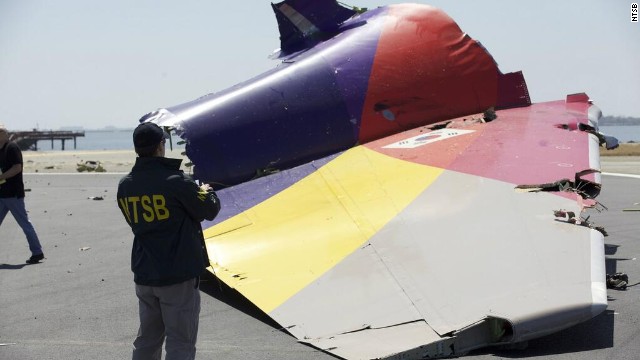 An investigator inspects the broken-off tail of the plane in a handout photo released July 7. The crash killed two people, injured 182 and forced the temporary closure of one of the country's largest airports.
An investigator inspects the broken-off tail of the plane in a handout photo released July 7. The crash killed two people, injured 182 and forced the temporary closure of one of the country's largest airports. 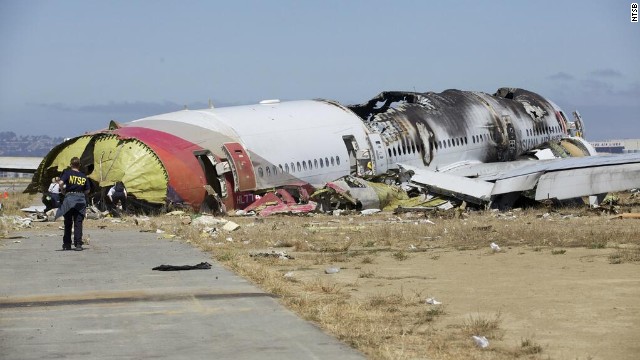 An investigator stands near the tail of the plane in a handout photo released on July 7. The NTSB has ruled out weather as a problem and said that conditions were right for a "visual landing."
An investigator stands near the tail of the plane in a handout photo released on July 7. The NTSB has ruled out weather as a problem and said that conditions were right for a "visual landing." 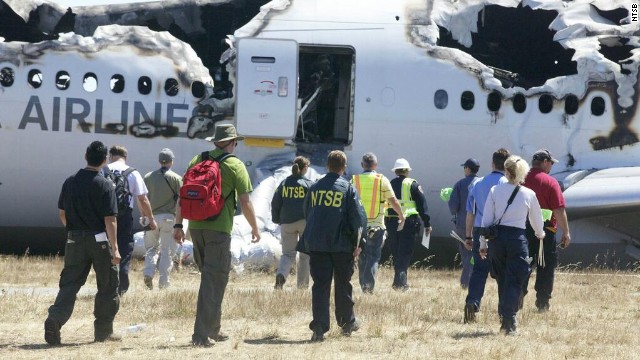 Investigators approach the crash in a handout photo released on July 7.
Investigators approach the crash in a handout photo released on July 7. 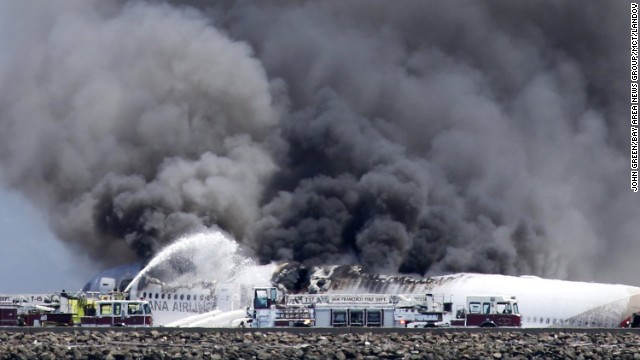 Fire crews attempt to quench the blaze on Saturday, July 6.
Fire crews attempt to quench the blaze on Saturday, July 6. 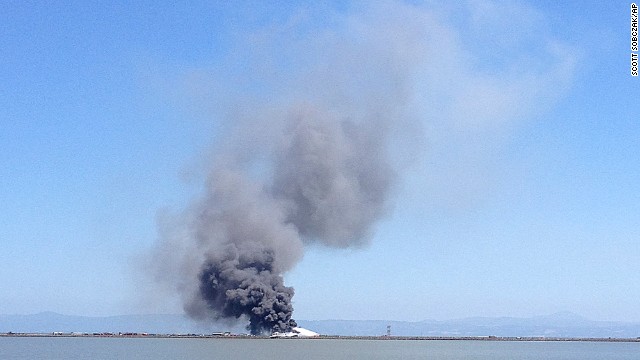 Smoke rises from the crash site across the San Francisco Bay on July 6.
Smoke rises from the crash site across the San Francisco Bay on July 6. 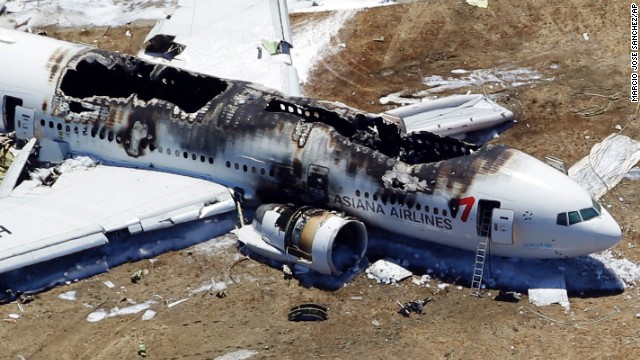 Asiana Airlines Flight 214 remains on the runway on July 6.
Asiana Airlines Flight 214 remains on the runway on July 6. 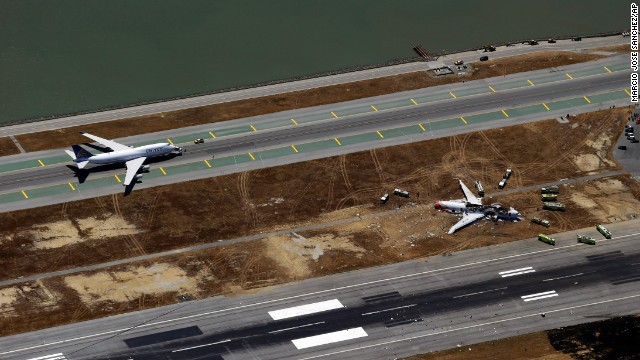 A plane sits on the runway on July 6 while emergency crews tend to the crash site.
A plane sits on the runway on July 6 while emergency crews tend to the crash site. 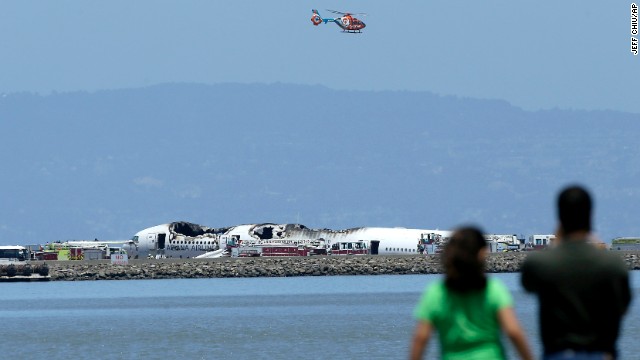 A helicopter flies above the wreckage on July 6 as people observe from across the waters of San Francisco Bay.
A helicopter flies above the wreckage on July 6 as people observe from across the waters of San Francisco Bay. 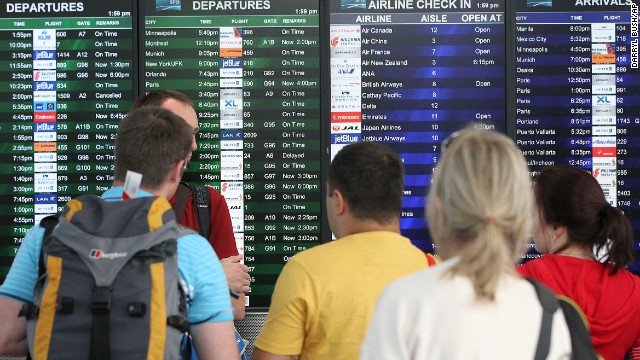 Travelers at San Francisco International Airport look at the departures and arrivals board after Asiana Flight 214 crashed on July 6. The airport, located 12 miles south of downtown San Francisco, is California's second busiest, behind Los Angeles International.
Travelers at San Francisco International Airport look at the departures and arrivals board after Asiana Flight 214 crashed on July 6. The airport, located 12 miles south of downtown San Francisco, is California's second busiest, behind Los Angeles International. 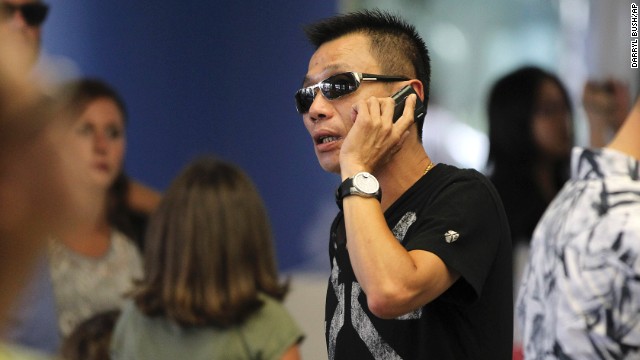 Kevin Cheng talks on his phone as he waits in the terminal after Asiana Airlines Flight 214 crash-landed on July 6. He said he was supposed to pick up students who were on board the flight from Seoul.
Kevin Cheng talks on his phone as he waits in the terminal after Asiana Airlines Flight 214 crash-landed on July 6. He said he was supposed to pick up students who were on board the flight from Seoul. 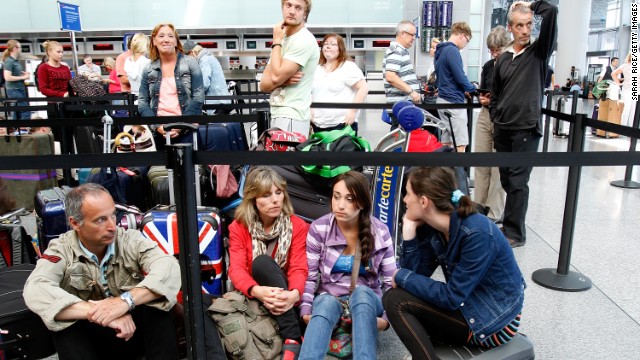 Passengers wait for the British Airways counter to reopen at San Francisco International Airport on July 6.
Passengers wait for the British Airways counter to reopen at San Francisco International Airport on July 6. 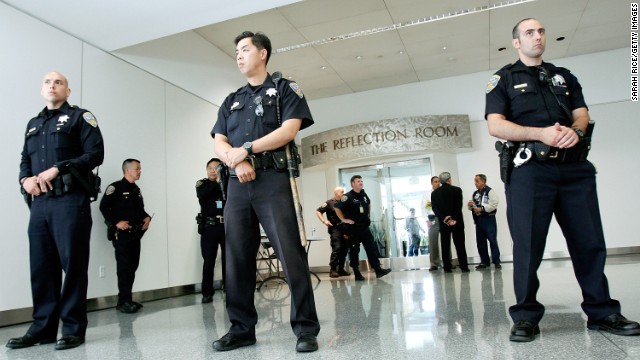 Police guard the Reflection Room at the San Francisco airport's international terminal, where passengers from Asiana Airlines Flight 214 were reportedly gathering after the crash landing on July 6.
Police guard the Reflection Room at the San Francisco airport's international terminal, where passengers from Asiana Airlines Flight 214 were reportedly gathering after the crash landing on July 6. 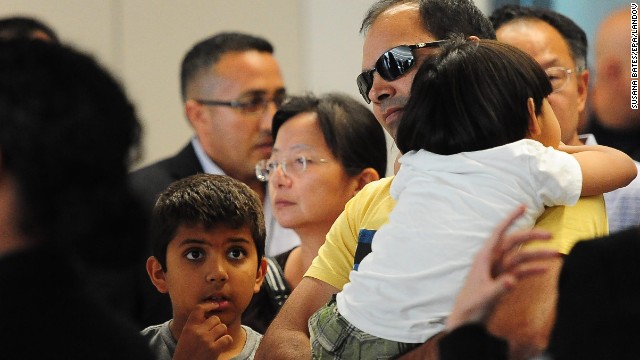 People are escorted from the Reflection Room at the San Francisco International Airport on July 6.
People are escorted from the Reflection Room at the San Francisco International Airport on July 6. 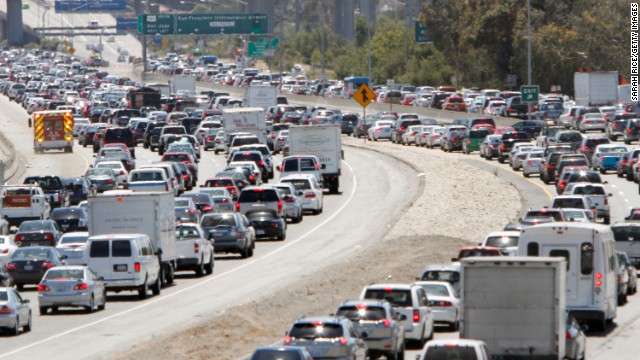 Traffic backs up on U.S. Route 101 South in San Francisco on July 6. The Bay Area airport was closed to incoming and departing traffic after the crash, according to the Federal Aviation Administration.
Traffic backs up on U.S. Route 101 South in San Francisco on July 6. The Bay Area airport was closed to incoming and departing traffic after the crash, according to the Federal Aviation Administration. 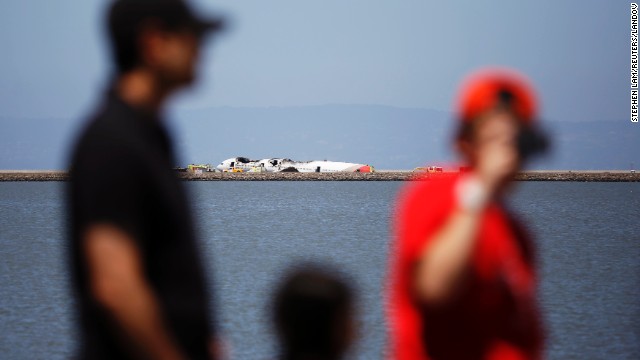 People look over the wreckage across a cove in San Francisco Bay on July 6.
People look over the wreckage across a cove in San Francisco Bay on July 6. 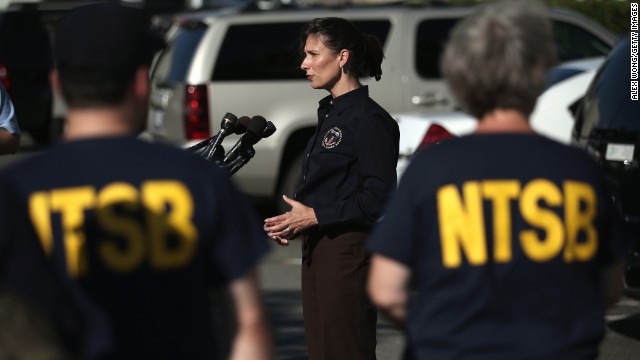 Deborah Hersman, chairwoman of the National Transportation Safety Board, speaks to the press at Reagan National Airport in Arlington, Virginia, before departing for San Francisco with an NTSB crew on July 6 to investigate the crash site.
Deborah Hersman, chairwoman of the National Transportation Safety Board, speaks to the press at Reagan National Airport in Arlington, Virginia, before departing for San Francisco with an NTSB crew on July 6 to investigate the crash site. 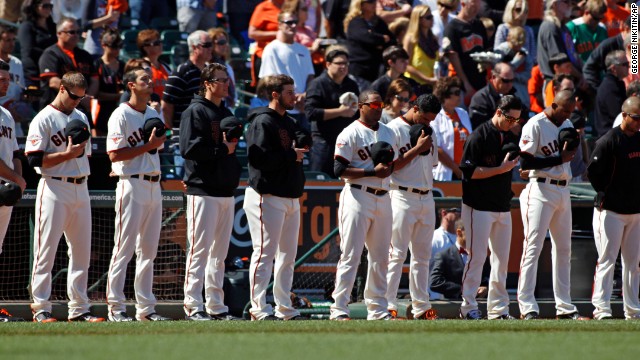 The San Francisco Giants observe a moment of silence for those killed and hurt in the crash before their baseball game on July 6 against the Los Angeles Dodgers at AT&T Park in San Francisco.
The San Francisco Giants observe a moment of silence for those killed and hurt in the crash before their baseball game on July 6 against the Los Angeles Dodgers at AT&T Park in San Francisco. 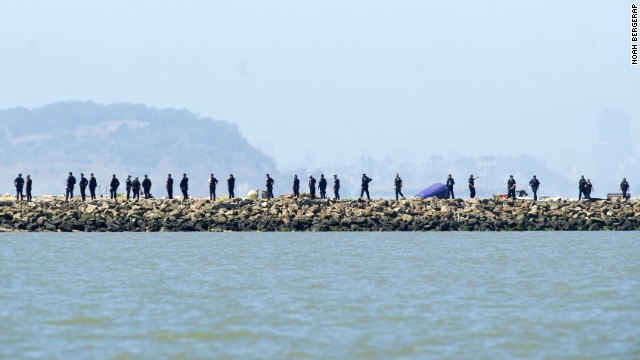 Crews comb the end of a San Francisco airport runway following the crash landing on July 6.
Crews comb the end of a San Francisco airport runway following the crash landing on July 6. 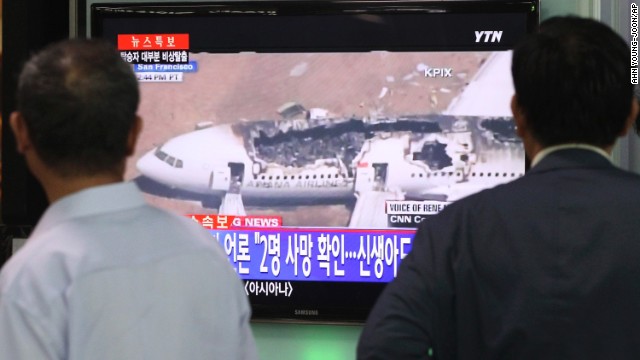 People in Seoul watch a news program reporting about the crash landing on July 6 in San Francisco. Asiana Airlines Flight 214 took off from Seoul earlier Saturday.
People in Seoul watch a news program reporting about the crash landing on July 6 in San Francisco. Asiana Airlines Flight 214 took off from Seoul earlier Saturday. 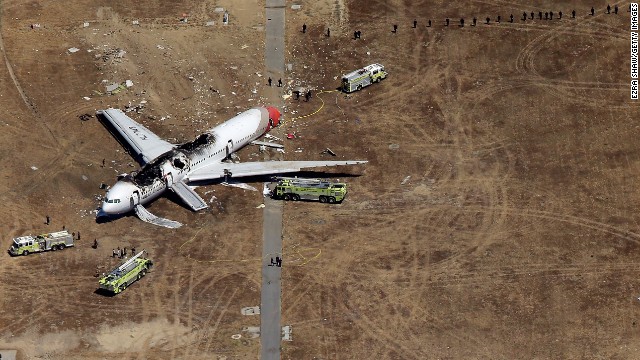 The plane crashed on July 6 around 11:30 a.m. (2:30 p.m. ET).
The plane crashed on July 6 around 11:30 a.m. (2:30 p.m. ET). 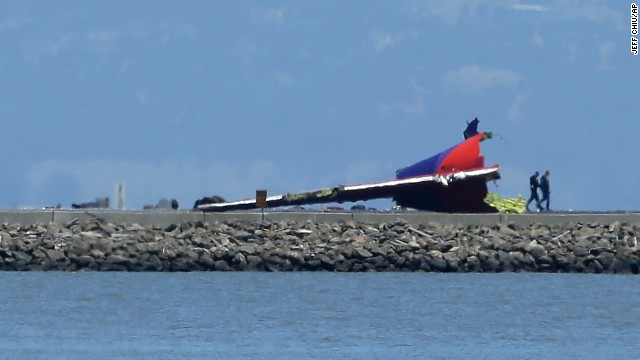 People walk past the wreckage of the plane's tail on July 6.
People walk past the wreckage of the plane's tail on July 6. 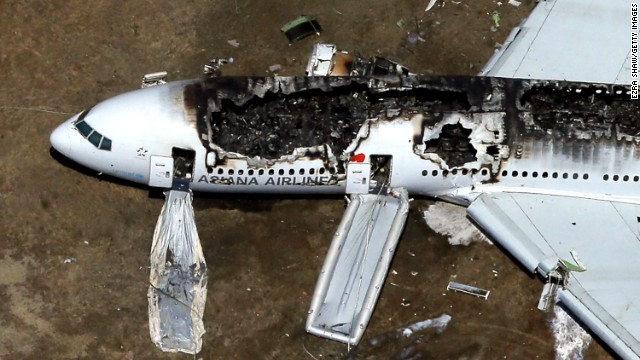 The burned-out plane remains on the runway on July 6. Passengers and crew members escaped down the emergency inflatable slides.
The burned-out plane remains on the runway on July 6. Passengers and crew members escaped down the emergency inflatable slides. 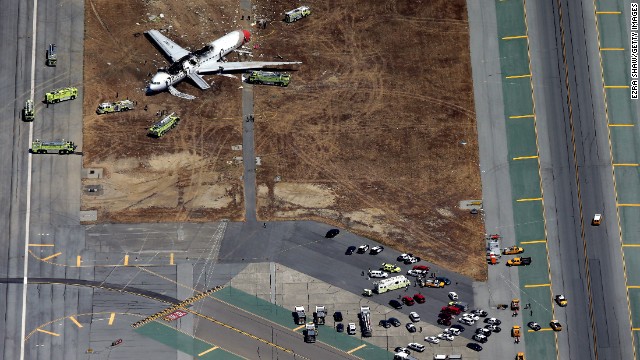 Rescue workers tend to the crash site on July 6.
Rescue workers tend to the crash site on July 6. 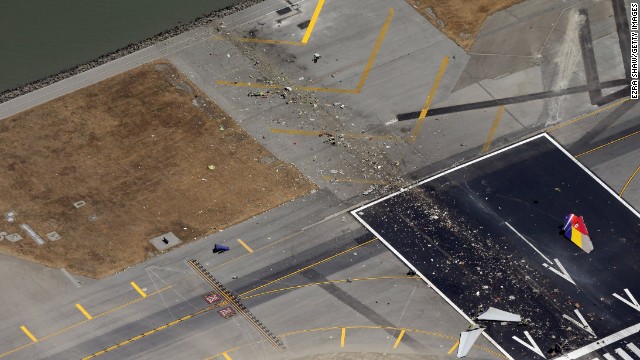 Debris litters the runway on July 6.
Debris litters the runway on July 6. 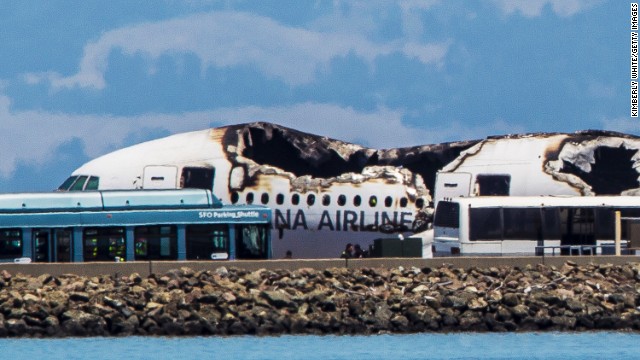 Airport shuttles arrive on the scene after the crash landing.
Airport shuttles arrive on the scene after the crash landing. 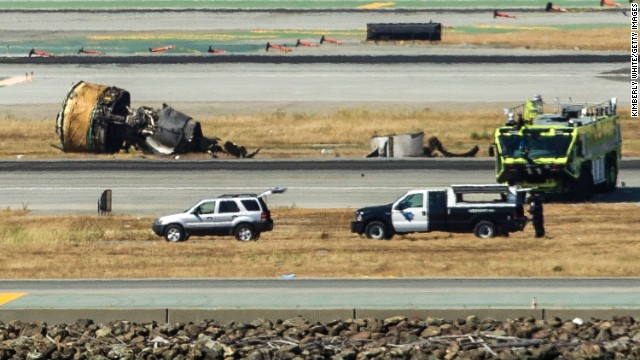 Wreckage from the Boeing 777 lies on the tarmac on July 6.
Wreckage from the Boeing 777 lies on the tarmac on July 6. 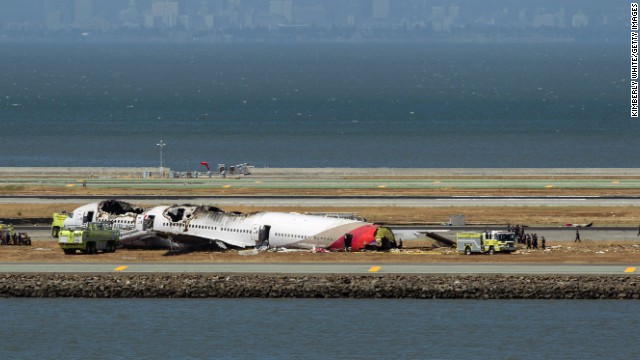 Crews surround the remains of the plane on July 6.
Crews surround the remains of the plane on July 6. 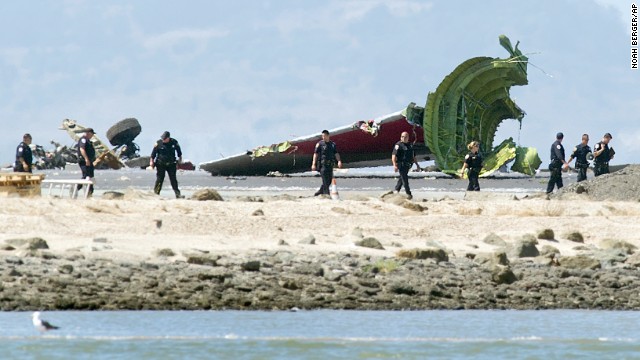 Investigators pass the detached tail and landing gear of Asiana Airlines Flight 214 on July 6.
Investigators pass the detached tail and landing gear of Asiana Airlines Flight 214 on July 6. 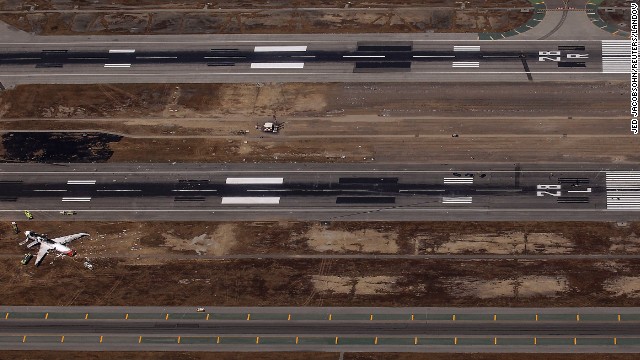 An aerial view shows the site of the crash landing between the runways on July 6.
An aerial view shows the site of the crash landing between the runways on July 6. 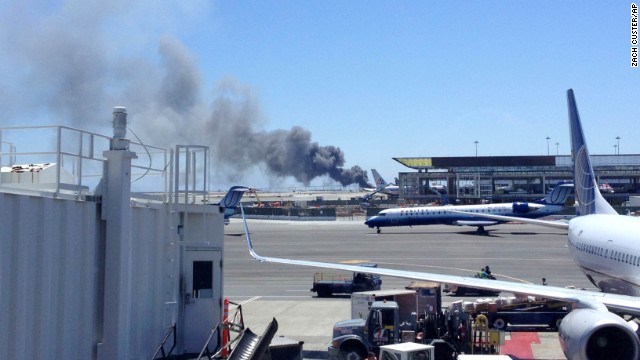 Smoke rises from the crash site on July 6 at the airport in San Francisco.
Smoke rises from the crash site on July 6 at the airport in San Francisco. 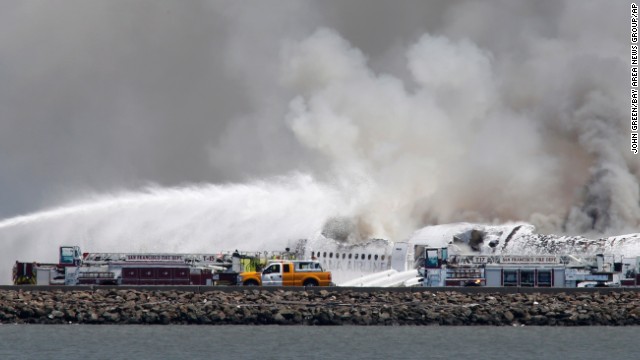 Fire crews work at the crash site at San Francisco International Airport on July 6.
Fire crews work at the crash site at San Francisco International Airport on July 6. 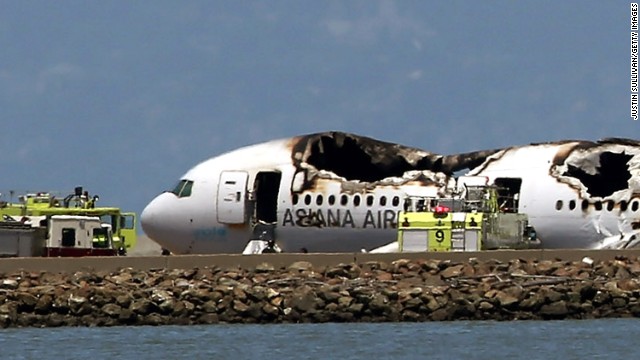 The Boeing 777 lies burned on the runway after it crashed landed on July 6.
The Boeing 777 lies burned on the runway after it crashed landed on July 6.  An aerial photo of the scene on July 6 shows the extent of the plane's damage.
An aerial photo of the scene on July 6 shows the extent of the plane's damage. 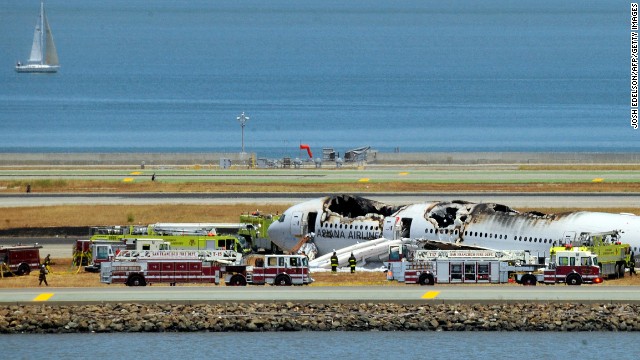 The burned-out plane sits surrounded by emergency vehicles on July 6.
The burned-out plane sits surrounded by emergency vehicles on July 6. 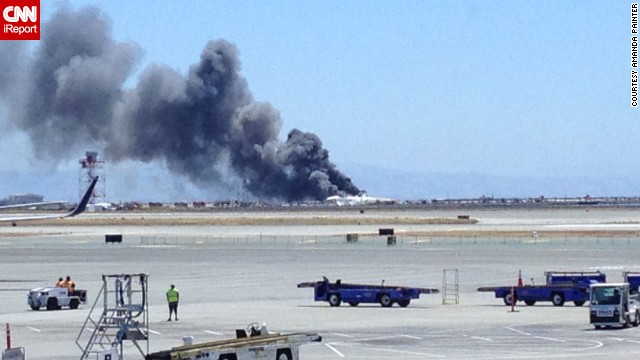 CNN iReporter Amanda Painter took this photo while waiting at the San Francisco airport on July 6. The entire airport has shut down and flights diverted to other airports.
CNN iReporter Amanda Painter took this photo while waiting at the San Francisco airport on July 6. The entire airport has shut down and flights diverted to other airports. 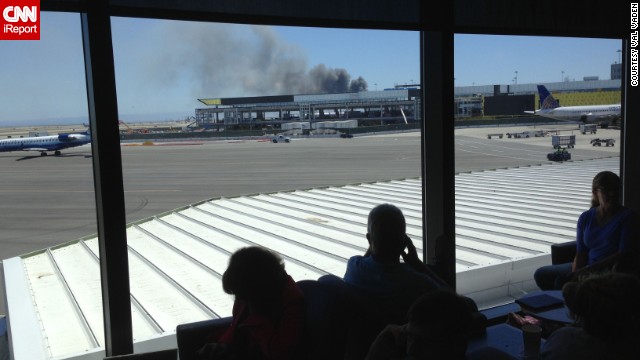 iReporter Val Vaden captured this photo while waiting in a departure lounge at the San Francisco airport on July 6. Val observed the billowing smoke and emergency responders' rush in.
iReporter Val Vaden captured this photo while waiting in a departure lounge at the San Francisco airport on July 6. Val observed the billowing smoke and emergency responders' rush in. 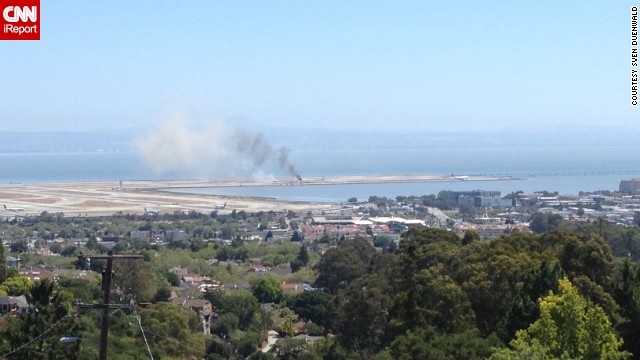 iReporter Sven Duenwald was at home on July 6 when he saw smoke rising into the air near the San Francisco International Airport.
iReporter Sven Duenwald was at home on July 6 when he saw smoke rising into the air near the San Francisco International Airport. 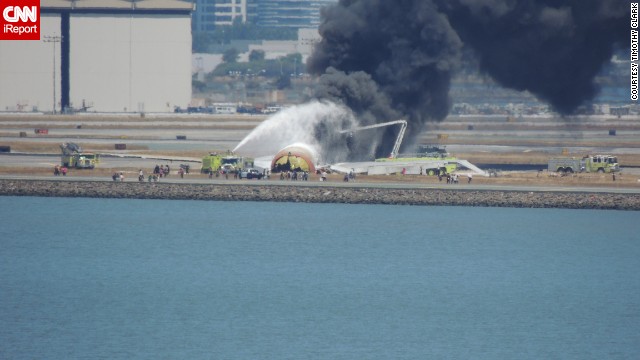 iReporter Timothy Clark was standing on the eighth floor of the Embassy Suites Airport Hotel when he heard a loud crashing sound from outside. "My daughter told me she heard a plane crash. I used my camera to get a clearer view and I could see a dust cloud. Then people running from the plane, then flames," he said.
iReporter Timothy Clark was standing on the eighth floor of the Embassy Suites Airport Hotel when he heard a loud crashing sound from outside. "My daughter told me she heard a plane crash. I used my camera to get a clearer view and I could see a dust cloud. Then people running from the plane, then flames," he said. 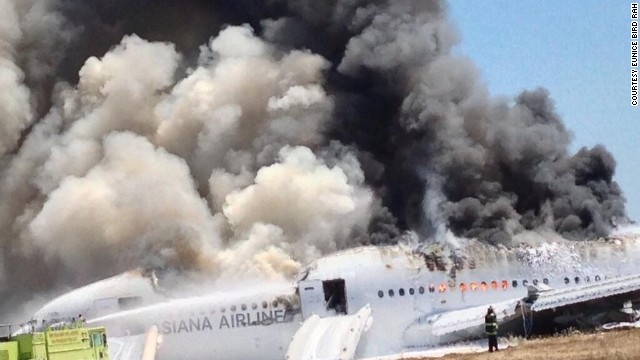 A photo provided to CNN by Eunice Bird Rah -- and shot by her father, who was a passenger on the plane -- shows flames and smoke bursting out of many of the aircraft's windows.
A photo provided to CNN by Eunice Bird Rah -- and shot by her father, who was a passenger on the plane -- shows flames and smoke bursting out of many of the aircraft's windows. 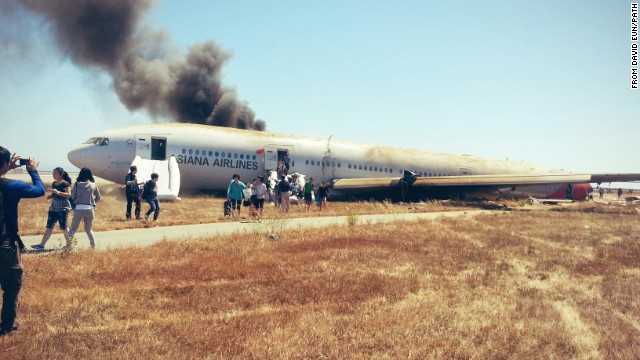 David Eun, a passenger on Asiana Airlines Flight 214, posted this image to Path.com along with the message, "I just crash landed at SFO. Tail ripped off. Most everyone seems fine, I'm ok. Surreal..." It was one of the first photographs taken after the crash.
David Eun, a passenger on Asiana Airlines Flight 214, posted this image to Path.com along with the message, "I just crash landed at SFO. Tail ripped off. Most everyone seems fine, I'm ok. Surreal..." It was one of the first photographs taken after the crash. 
1

2

3

4

5

6

7

8

9

10

11

12

13

14

15

16

17

18

19

20

21

22

23

24

25

26

27

28

29

30

31

32

33

34

35

36

37

38

39

40

41

42

43
- William McGee: Seeing survival as a "miracle" lulls fliers into ignoring safety procedures
- McGee: Stay alert during takeoff, landing and severe turbulence
- McGee: Listening, staying buckled, knowing where exits are can save your life
- He says don't even think about retrieving luggage while evacuating
Editor's note: William McGee is the author of "Attention All Passengers: The Airlines' Dangerous Descent—and How to Reclaim Our Skies."
(CNN) -- There is still much we don't know about what happened during the crash of Asiana Airlines Flight 214, in which two people were killed in San Francisco on Saturday. But we do know that of the 305 survivors on board that Boeing 777, 123 actually walked away from the scene, something that may seem unimaginable if you view the amateur video of the wide-body jet somersaulting while bursting into flames.
The city's fire chief described the survival of so many as "nothing short of a miracle."
But, although we persist in thinking divine intervention is the only thing that can save a flight in peril, it's no longer a miracle when even hundreds of passengers survive the worst of accidents. The "miracle of Toronto" and the "miracle on the Hudson" are just two examples of recent flight disasters in which everyone on board survived. And the danger of "miracle" thinking is that it lulls some passengers into not learning more about how best practices can save lives.

Are all airline crashes survivable? Of course not. But the statistics tell the story. In 2001, the National Transportation Safety Board released an exhaustive study of U.S. airline accidents over a 17-year period and found that 95.7% of occupants survived.
I wrote a book that focused on airline safety, and my research led me to interview dozens of aviation safety experts, including several who work for Boeing in Seattle. (The Asiana flight was on a Boeing 777.) In recent years, aircraft manufacturers have focused on a multipronged approach to survivability: In addition to accident avoidance, great strides have been made in helping occupants survive the impact, post-crash fires and fumes, and safely evacuate.
Boeing experts told me that many of the most significant advancements in safety were developing safer materials for carpeting, seats, and other cabin components. These new materials reduce flammability and toxic fumes during those critical first minutes after a fire starts. Experts also pointed to improved evacuation slides, which historically suffered high failure rates during actual emergencies.
But it isn't all about technological advancements; human factors also play a critical role. And here is where "miraculous survival" thinking is a danger: It can cause some passengers to not learn more about how best practices -- not miracles -- can save their lives.
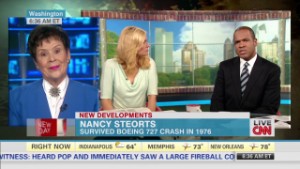 Surviving a plane crash
Surviving a plane crash 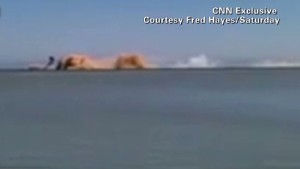 Video shows plane's moment of impact
Video shows plane's moment of impact 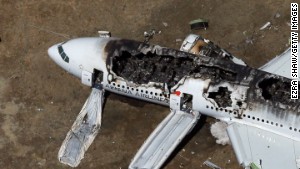 Social media in aftermath of plane crash
Social media in aftermath of plane crash 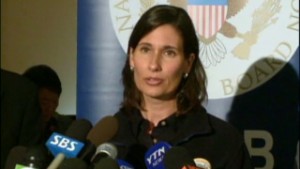 Flight 214's communications revealed
Flight 214's communications revealed Even the most frequent fliers may not realize how simple actions can dramatically improve their chances of survival. I'm not suggesting that flying has to be a white-knuckle, continually vigilant experience. I am suggesting that you not zone out during "key phases" of the flight, such as takeoff, landing, severe turbulence, and irregular operations. Only 11% of fatal accidents happened at cruising altitude.
Instead, consider the following to enhance your safety:
• Listen: You may be a veteran flier -- but that doesn't mean you don't need to pay attention during the preflight instructions. Emergency egress procedures can vary widely, even among similar aircraft types.
• Dress smart: Wear comfortable, flat-heeled shoes that won't fall off easily. Flip-flops and high heels are the wrong attire for evacuation slides. Avoid highly flammable polyesters and pantyhose; think cotton and wool.
• Seating: Choosing a seat involves many factors, but access to emergency exits may end up being the most important for you. Count the rows to the nearest exit, since you may need to find it under dark or smoky conditions.
• Stay buckled: You know that admonition to always stay belted while you're in your seat? Do it. Severe turbulence can maim and even kill.
• Secure your stuff: Loose items = projectiles.
• Drinking/medications/sleeping: During key phases of flight, it's critical that you remain sharp. Booze and meds can severely impair your ability to follow instructions.
• Strapping: The only safe place for a child under 2 years old is in an approved restraint system. Both the National Transportation Safety Board and the Federal Aviation Administration agree on this, though the FAA won't mandate that airlines ban children sitting in adults' laps. Don't believe that G-forces are for real? Take another look at the Asiana video; then imagine holding a child throughout that ordeal.
In the years ahead, the airline industry may remember Asiana Flight 214 for another reason. An alarming number of passengers on Saturday took the time to retrieve their luggage -- even bags in the overhead bins, no less -- before evacuating that burning aircraft. Words fail when contemplating how such thoughtless actions threatened so many lives. So let's add this to the list: Don't even think about evacuating while carrying anything that isn't alive.
Inevitably, some will scoff at learning more about survivability. I've read scores of armchair experts who assert that no one can walk away from a plane crash. Don't listen to them -- they can cost you or your loved ones your lives.
Follow @CNNOpinion on Twitter .
Join us at Facebook/CNNOpinion .
The opinions expressed in this commentary are solely those of William McGee.







